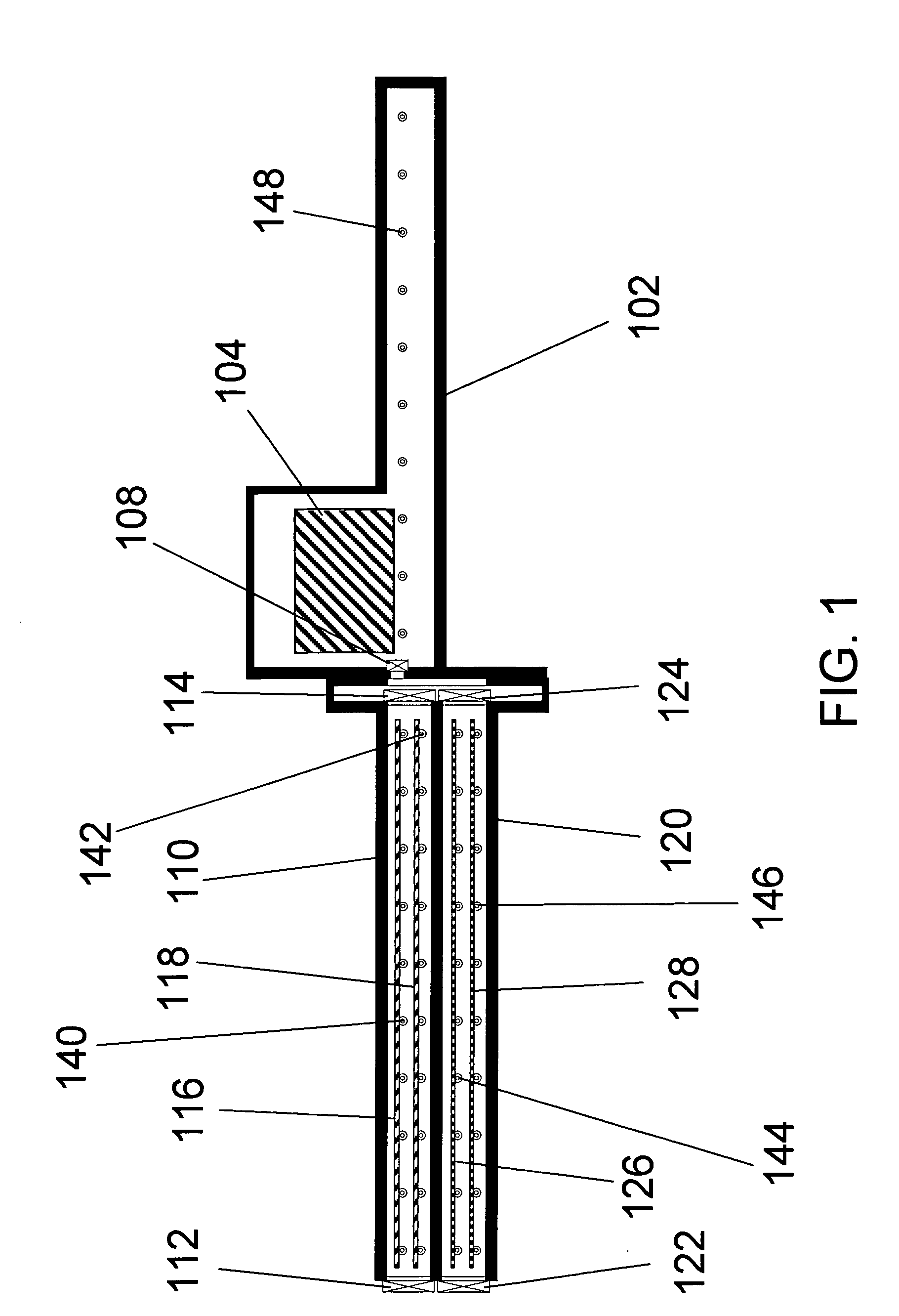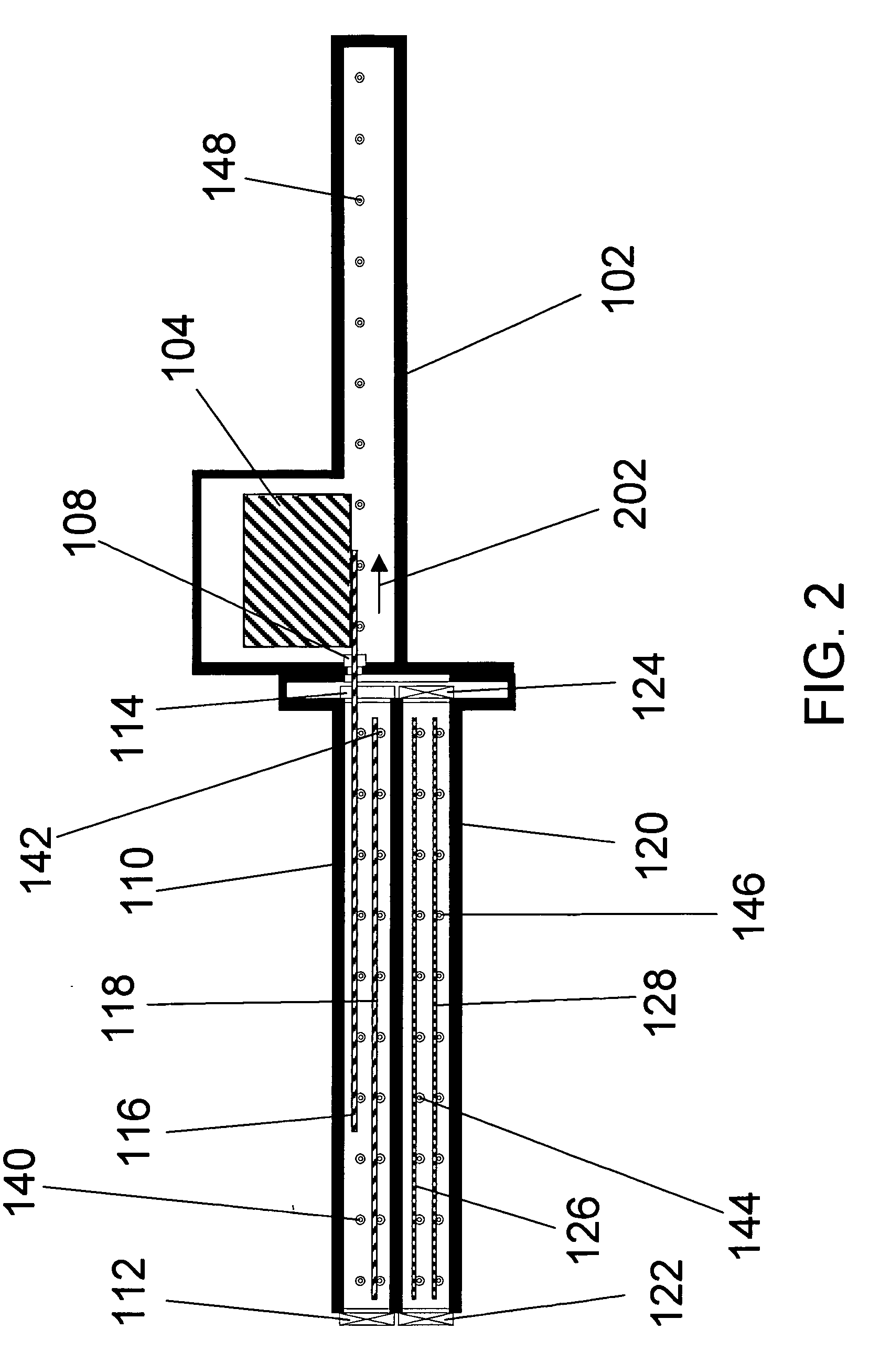Multiple loadlocks and processing chamber
a technology of loading chamber and loadlock, which is applied in the field of loadinglocks, can solve the problems and achieve the effect of limiting the throughput of achievable tools and maximising throughpu
- Summary
- Abstract
- Description
- Claims
- Application Information
AI Technical Summary
Benefits of technology
Problems solved by technology
Method used
Image
Examples
first embodiment
[0051]FIGS. 1 through 18 show cross-sectional schematic views of the present invention comprising dual loadlocks and a processing chamber. The vacuum system is illustrated at various times in the operational cycle. During the operational cycle shown here, a total of four substrates 116, 118, 426, and 428 are tested using electron beams generated by the column assembly 104, mounted in the processing chamber 102. At the left of processing chamber 102 in FIGS. 1 through 18 is the loadlock assembly, comprising loadlock chambers #1 110 and #2 120, external valves 112 and 122, internal valves 114 and 124, and rollers 140, 142, 144, and 146.
[0052] Substrates located outside the vacuum system are inserted into or removed from loadlock chamber #1 110 through external valve 112. Substrates located in loadlock chamber #1 110 are inserted into or removed from processing chamber 102 through internal valve 114. Substrates being inserted into or removed from the upper slot of loadlock chamber #1 1...
second embodiment
Similar feedpaths can be defined for the present invention, for example, the feedpath for substrate 2118 in FIGS. 21-23 includes the following positions: [0120] 1. Lower slot of input loadlock chamber #1 2110[0121] 2. Processing chamber 2104[0122] 3. Lower slot of output loadlock chamber #1 2210
[0123] The loadlock chambers 2110 and 2120 are assumed to be connected to pumping and venting manifolds, as is familiar to those skilled in the art. Venting systems typically consist of a number of valves, manifolds, and a supply of dry nitrogen—the same venting system can be used for both input loadlock chambers 2110 and 2120, since only one of the input loadlock chambers 2110 and 2120 is venting at any one time. Pumpdown systems typically consist of a number of valves, manifolds, and pumps such as air ejectors, mechanical pumps, turbopumps, and / or cryopumps—the same pumping system can be used for both input loadlock chambers 2110 and 2120, since only one of the input loadlock chambers 2110 ...
PUM
 Login to View More
Login to View More Abstract
Description
Claims
Application Information
 Login to View More
Login to View More - R&D
- Intellectual Property
- Life Sciences
- Materials
- Tech Scout
- Unparalleled Data Quality
- Higher Quality Content
- 60% Fewer Hallucinations
Browse by: Latest US Patents, China's latest patents, Technical Efficacy Thesaurus, Application Domain, Technology Topic, Popular Technical Reports.
© 2025 PatSnap. All rights reserved.Legal|Privacy policy|Modern Slavery Act Transparency Statement|Sitemap|About US| Contact US: help@patsnap.com



